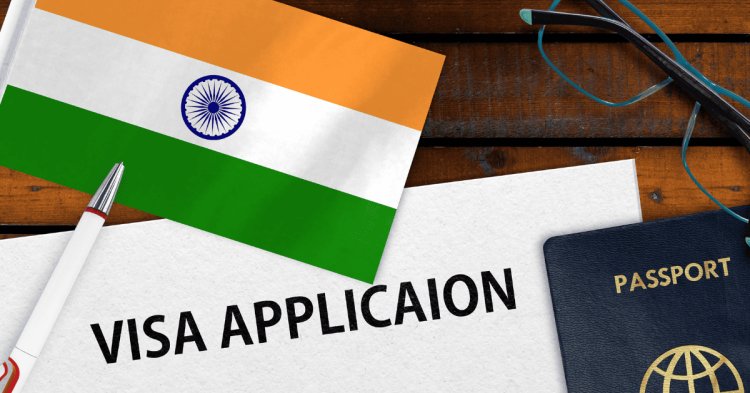Indian e-Visa vs. Regular Visa: Which One is Right for U.S. Travelers?
Planning a trip to India? Discover the key differences between an Indian e-Visa and a regular visa for U.S. travelers to choose the right one for you.

India is a dream destination for many U.S. travelers, offering a blend of rich history, vibrant culture, and breathtaking landscapes. But before you embark on your journey, obtaining the correct visa is essential. Should you go for an Indian e-Visa or a regular visa? Each option has its benefits, and choosing the right one depends on your travel needs.
If you're looking for a hassle-free visa application, check out this Indian e-Visa service for U.S. travelers to get started quickly and easily.
Understanding the Indian e-Visa
The Indian e-Visa is an electronic travel authorization that allows U.S. citizens to enter India for tourism, business, or medical purposes. It's a popular choice due to its quick processing time and convenient online application process.
Key Features of the Indian e-Visa
-
Application Process: Fully online, eliminating the need for embassy visits.
-
Processing Time: Typically 3-5 business days.
-
Validity: Available for 30 days, 1 year, or 5 years, depending on the type.
-
Entry Type: Usually allows double or multiple entries, depending on the validity.
-
Purpose of Travel: Ideal for tourism, short business visits, and medical treatment.
Advantages of Choosing an Indian e-Visa
✔️ Faster and more convenient than a regular visa.
✔️ Cost-effective with lower application fees.
✔️ No need to send physical documents to an embassy.
✔️ Multiple validity options based on travel needs.
Limitations of the Indian e-Visa
❌ Not extendable or convertible once issued.
❌ Limited to specific airports and seaports for entry.
❌ Restricted for long-term stays or employment.
Understanding the Regular Indian Visa
A regular visa (stamped visa) is a traditional visa obtained through an Indian consulate or embassy. This is the best option for travelers who need longer stays or have special travel requirements.
Key Features of the Regular Visa
-
Application Process: Requires an in-person visit or mail submission.
-
Processing Time: Can take 7-14 business days or more.
-
Validity: Can be issued for up to 10 years.
-
Entry Type: Allows multiple entries over an extended period.
-
Purpose of Travel: Suitable for employment, study, journalism, or long-term stays.
Advantages of Choosing a Regular Visa
✔️ Suitable for long-term travelers planning to stay over 180 days.
✔️ More flexible travel options, including land border crossings.
✔️ Ideal for work, study, or extended business trips.
Limitations of the Regular Visa
❌ Longer processing time compared to the e-Visa.
❌ Requires more documentation and embassy visits.
❌ Higher application fees and processing costs.
Indian e-Visa vs. Regular Visa: Which One Should You Choose?
To help you decide, here’s a quick comparison:
| Feature | Indian e-Visa | Regular Visa |
|---|---|---|
| Application | Online | In-person/mail |
| Processing Time | 3-5 days | 7-14 days or more |
| Validity | 30 days - 5 years | Up to 10 years |
| Entry Type | Double/Multiple | Multiple |
| Cost | Lower fees | Higher fees |
| Purpose | Tourism, Business, Medical | Work, Study, Extended stays |
| Extendable? | No | Yes |
Choose an e-Visa if:
-
You’re visiting for tourism, business, or short-term medical treatment.
-
You want a quick and easy online process.
-
You’re staying for less than 180 days.
Choose a Regular Visa if:
-
You’re traveling for work, study, or long-term stays.
-
You need more travel flexibility (land border entry, extensions, etc.).
-
You want a visa valid for up to 10 years.
Pro Tips for U.S. Travelers Applying for an Indian Visa
✅ Apply in advance to avoid last-minute delays.
✅ Ensure your passport has at least six months’ validity from the date of entry.
✅ Double-check the required documents before submission.
✅ Use a reliable visa service for a smooth process – check out this Indian e-Visa service for fast processing!
Conclusion
Choosing between an Indian e-Visa and a regular visa depends on your travel needs. If you’re looking for a quick and easy online application, an e-Visa is the best option. However, if you plan to stay long-term or travel for work or study, a regular visa is more suitable.
What type of visa do you think is best for your trip to India? Share your thoughts in the comments!
What's Your Reaction?















.jpg)